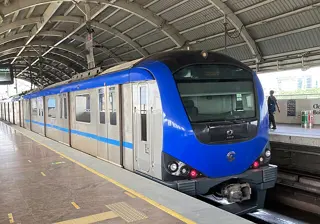Raipur's Metro Project: A Game-Changer for Real Estate
 Raipur is on the brink of a major urban transformation with the highly anticipated Light Metro Rail System (LRTS). Governed by a strategic MoU between the Raipur Municipal Corporation and the Russian Government, this metro project, backed by an estimated investment of ₹400-500 crore, aims to dramatically enhance the city’s connectivity and transport infrastructure. This development is poised to trigger a ripple effect on the real estate landscape across Raipur and its adjoining areas.
Raipur is on the brink of a major urban transformation with the highly anticipated Light Metro Rail System (LRTS). Governed by a strategic MoU between the Raipur Municipal Corporation and the Russian Government, this metro project, backed by an estimated investment of ₹400-500 crore, aims to dramatically enhance the city’s connectivity and transport infrastructure. This development is poised to trigger a ripple effect on the real estate landscape across Raipur and its adjoining areas.
Key Locations Benefiting from the Metro Network
Though the detailed network map is forthcoming post feasibility studies, several central and peripheral areas are expected to reap maximum benefits:
- Raipur Central Business District (CBD): Improved connectivity and new metro lines will increase demand for office spaces and residential units, elevating both prices and rental yields.
- Sector 1 and 2 Residential Zones: Enhanced accessibility will make these suburbs more attractive to working professionals.
- Dalli Rajhara and Bhilai Vicinity: Connectivity to industrial hubs will improve, driving demand for workforce housing.
- Upcoming Transit-Oriented Developments (TODs): New metro stations will likely spur mixed-use developments integrating retail, office, and residential projects.
Impact on Accessibility and Commute Patterns
The Light Metro system promises to slash travel times and reduce congestion on existing roads by providing a reliable, eco-friendly transit alternative. This modern public transport solution will enable residents to navigate Raipur’s growth corridors with ease, linking residential sectors to business districts and educational institutions seamlessly. Such access transforms the perceived value of neighborhoods, often resulting in significant uplift in real estate desirability and long-term investment appeal.
Effects on Property Prices
History and urban economic principles confirm that metro projects tend to escalate property values in proximate areas by 15-30%. Raipur’s project is expected to follow suit due to:
- Improved connectivity reducing dependence on private vehicles
- Greater demand from professionals seeking convenient commutes
- Investor interest in marginal and underdeveloped locations adjacent to metro lines
Real estate experts anticipate that locations within a 1 to 2 km radius of metro stations will see accelerated price appreciation, particularly for residential apartments and commercial shops.
Influence on Rental Markets
With dynamic mobility options, rental demand is predicted to surge around metro corridors. Young professionals, students, and corporate employees will prefer living close to metro stations for time efficiency. This will boost rental rates and reduce vacancy periods, making such properties lucrative for landlords and investors.
Broader Urban and Environmental Benefits
Raipur’s metro also aligns with sustainable urban growth by reducing carbon emissions and promoting public transit usage. This can attract environmentally conscious buyers and tenants, further enhancing market values.
Conclusion
Raipur’s Light Metro project is more than an infrastructure upgrade it signals a profound shift in urban mobility that directly correlates with real estate growth. Stakeholders including investors, homeowners, and developers should focus on metro-adjacent localities to capitalize on rising property values, improved rental returns, and enhanced living standards. The city's future is set on a path where connectivity drives real estate prosperity like never before.